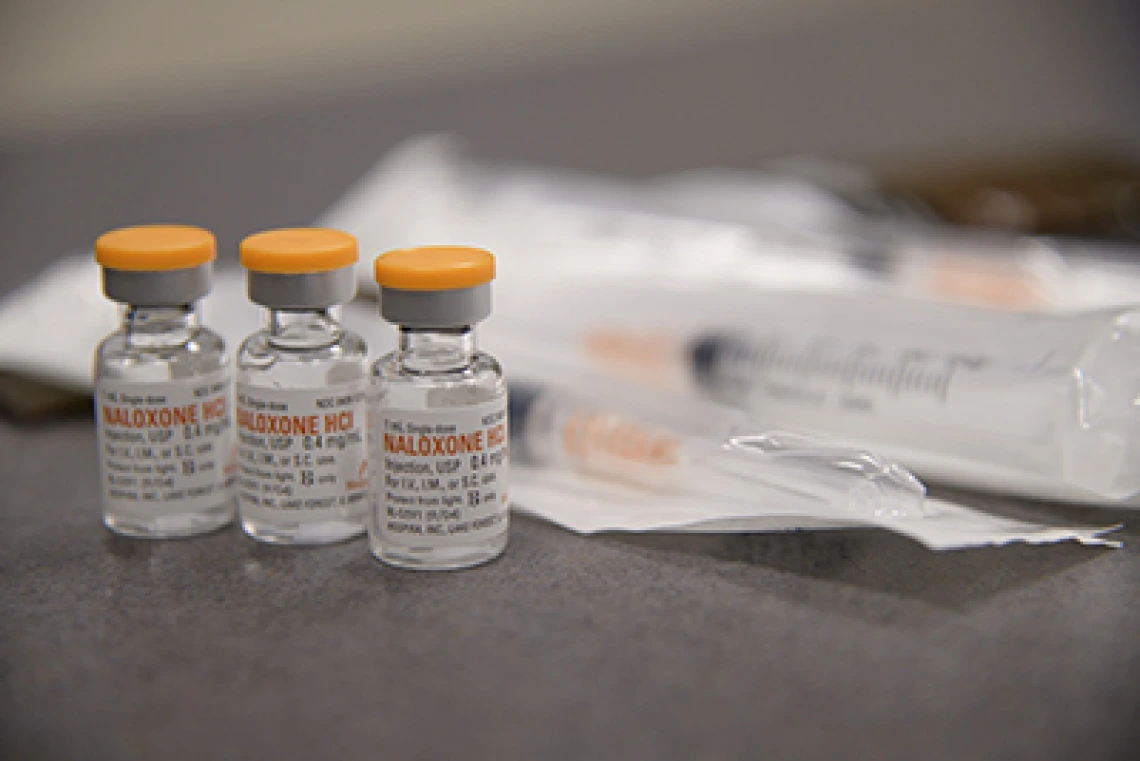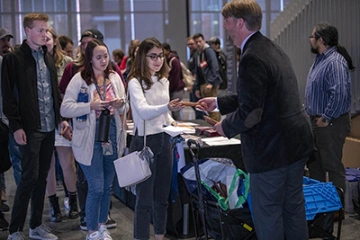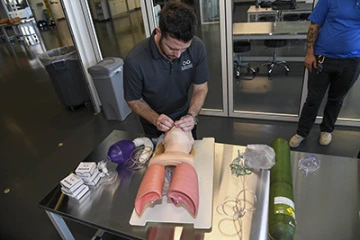Health Sciences Collaborations Help Prepare for Potential Increase in Opioid Abuse

As the country grapples with the COVID-19 pandemic, another epidemic could begin to intensify, as the nation’s economy struggles to absorb the impact of lower employment resulting from measures that have suspended the operations of thousands of businesses.
The U.S. Department of Labor announced this week that there were more than 3 million unemployment claims for the week ending March 21, the largest increase ever.
A study published in a 2017 issue of the Journal of Health Economics found that opioid-related deaths and emergency department visits increased in response to a temporary rise in unemployment.
As it stands today, in the United States someone dies of an opioid overdose every 11 minutes. In Arizona, two people die of opioid overdoses each day. Naloxone, a prescription drug that can reverse the effects of opioid overdose, can be lifesaving if administered in time.
To help combat the devastating effects of opioid abuse on a regional level, several University of Arizona Health Sciences programs are providing education and training about opioids, addiction and naloxone administration. An immediate effort focuses on outreach to rural communities, first responders, college students and lay professional health workers.
“Education and prevention are important components to solving the addiction problem,” said Todd Vanderah, PhD, department head and professor of Pharmacology in the College of Medicine – Tucson, who also is leading the development of the university’s Comprehensive Center for Pain and Addiction. “This type of outreach to the public, in tandem with ‘behind-the-scenes ’preclinical and clinical research, is key to decreasing the stigma of addiction, eliminating pain and saving lives.”
Community Outreach
Most people who attended the Arizona Poison and Drug Information Center’s 12 opioid overdose trainings in rural Cochise County last year didn’t have any medical background or easy access to naloxone. Many had a loved one experiencing opioid use disorder, and some were in recovery themselves.
During the training, attendees learned to recognize the signs of an overdose and how to administer naloxone. They also received free naloxone kits to take home, allowing for a quick response if an overdose is suspected. This additional window of time is crucial when emergency help could take an hour or more to arrive to their rural community.
The Center, part of the College of Pharmacy, uses public outreach as a crucial tool for preventing and reducing opioid-related deaths. “We are hoping to continue this training in the rural counties so that we can spread it across Arizona,” said Laura Morehouse, MPH, poison/drug education specialist. “Our real hope is that the people we train go on and train their family and friends.”
First Responder Training
The Arizona First Responders Initiative is focused on decreasing opioid-related deaths by training law enforcement, emergency medical service personnel, fire agencies and community members to recognize the symptoms of opioid abuse and administer naloxone. The program is a joint effort of the university’s Center for Rural Health and the Arizona Department of Health Services.
“We will travel to any town or corner of the state,” said Amy McPherson, a training instructor and senior program coordinator at the Center for Rural Health.
Feedback indicates the training is necessary and valued, and agencies have reported participants are using it in the community more than anticipated. Since May 2018, the team has trained 1,602 first responders across 12 counties to administer naloxone and distributed 7,510 doses.
“Several officers have told me that they used their training and naloxone within a week or two of receiving it,” McPherson said.
Student Education
Medical, nursing, pharmacy and public health students collaboratively tackle health care issues during Health Sciences interprofessional education (IPE) events. The most recent event, a pilot collaboration between Campus Health and the Health Sciences Center for Transformative Interprofessional Healthcare, was the first to focus on the opioid epidemic.

Christopher Thomas of Sonoran Prevention Works hands out free overdose prevention kits containing naloxone to Drug Survival 102 attendees.
The expert panel presentation “Drug Survival 102” was open to all UArizona students and focused on arming students with information to save lives and reduce stigma associated with drug use. Sonoran Prevention Works distributed free naloxone to all attendees.
The naloxone education and administration demonstration resonated with Caetlin Asher, a senior in the College of Public Health. “I’ll share with my friends how easy and safe it is to use naloxone, and how easily available it can be,” she said.
After the panel, Health Sciences students broke into interprofessional groups to assess the complexities of opioid overdoses in the health care system and discuss a scenario they might encounter on or around campus.
“It’s always interesting to hear perspectives of people in different professions,” said Lindsay Weigel, a senior in the College of Nursing. “Drug use is everywhere you go. This whole event showed you don’t need to be a health professional to help save lives.”
Lay Professional Collaborations
“You don’t know who is going to come across an overdose in a group that doesn’t have a designated medical professional. So, you train the whole team,” says Allan Hamilton, MD, executive director of the Arizona Simulation Technology & Education Center, or ASTEC, at Health Sciences.

A local substance abuse rehab facility staff member applies what he learned during hands-on overdose training offered by ASTEC.
ASTEC recently developed a simulation training curriculum, including naloxone education, for professionals who may have limited medical background but who are working in environments where they are likely to encounter opioid overdoses. The training could benefit staff members at homeless shelters, rehabilitation centers and transitional-living facilities, as well as community members.
Hamilton was initially contacted by a substance abuse rehabilitation center requesting training for employees. While all of their staff members carried naloxone, they needed the knowledge to be comfortable and effective using it under a wide array of circumstances. Hamilton was eager to react to the request and provided a training session in the ASTEC facility with three practice scenarios of increasing severity.
Hamilton plans to make similar ASTEC classes available to the public on a quarterly basis, and he is prepared to increase classes based on demand. Like the other Health Sciences community outreach efforts, he said, “We want our outreach to be more widespread and make a difference in the community.”
Photo Gallery
Contact
Health Sciences
Office of Communications
520-626-7301
public@email.arizona.edu

